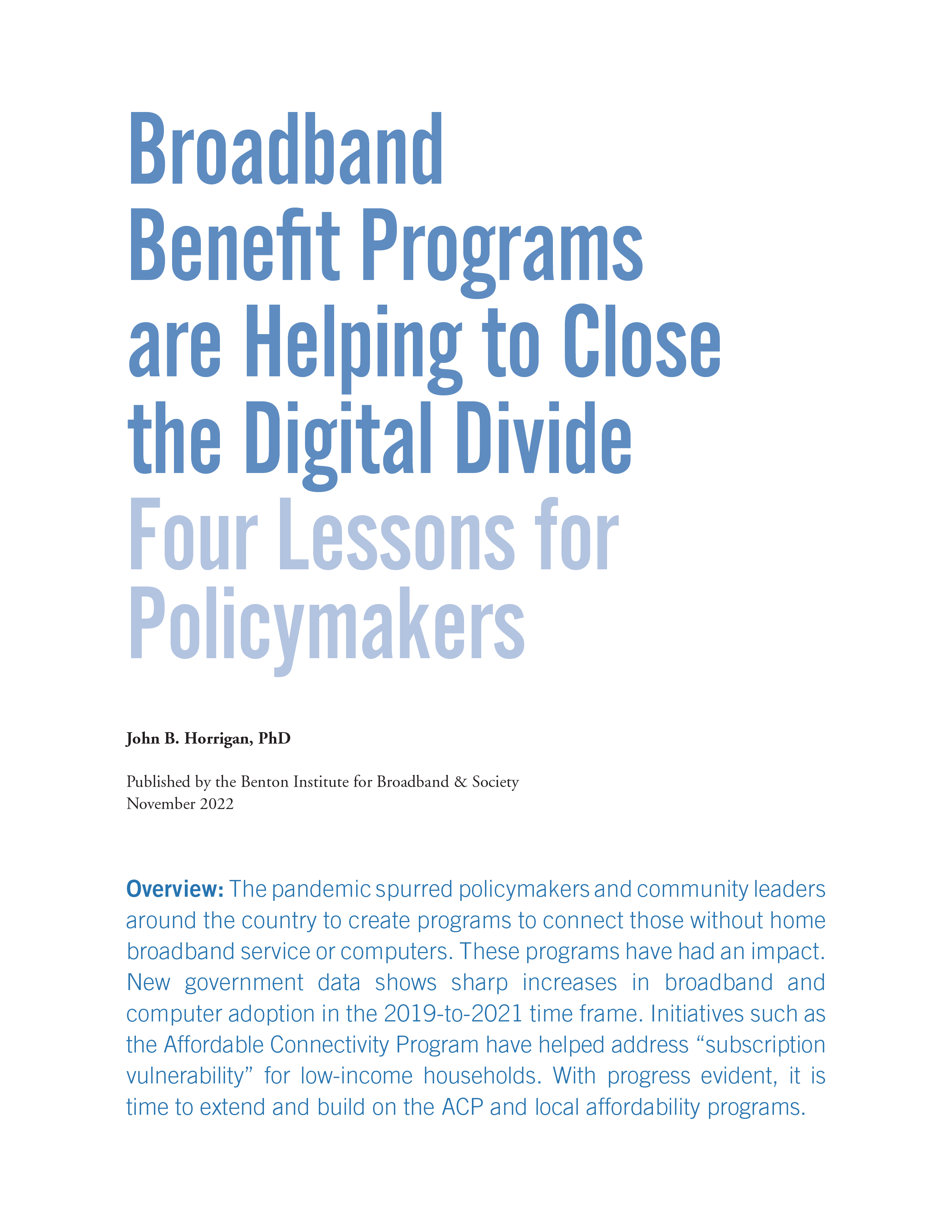John Horrigan
The Affordable Connectivity Program and Rural America
Households in rural America are overcoming significant headwinds as they sign up for the Affordable Connectivity Program (ACP) benefit at a higher rate than urban counterparts. Through April 2023, ACP enrollment data shows that: 15% of all rural households have enrolled in ACP and 14% of households in metro or urban areas have enrolled in the benefit. Even this modest difference is striking given the tensions that buffet rural residents as they consider enrolling in ACP.
ACP Enrollment Performance Tool: Understanding Factors that Play a Role in ACP Enrollment
Recently we launched the Benton Institute’s Affordable Connectivity Program Enrollment Performance Tool, a free resource that helps communities answer the question: “How are ACP sign-ups going?” Using the tool to search 5-digit zip codes delivers two important numbers: 1) how many households have signed up for ACP and 2) the expected number of households enrolled. Comparing expected enrollment to actual enrollment is a measure of performance.
The Benton Institute ACP Performance Tool
The Affordable Connectivity Program (ACP) is at an inflection point. Launched in early 2022, ACP provides 17 million households up to $30/month in subsidies to offset the cost of broadband. But the program faces two critical challenges. First, less than a third of eligible households currently participate in the program—mainly because the people who could benefit most from the subsidy are unaware that it exists. The Federal Communications Commission (FCC), local governments, and digital equity groups are stepping up efforts to improve ACP awareness and participation.
Let’s close the digital divide once and for all for Black communities
Since digital technologies first emerged about 30 years ago, Black Americans have trailed in terms of access. This “digital divide” is real, it’s important and we can do better. According to our analysis of data from the American Community Survey, 40 percent of Black Americans do not have high-speed, fixed broadband at home, compared to 28 percent of whites.
Half of ACP-Eligible Households Still Unaware of the Program
After a year of operation, half of all households eligible for the Affordable Connectivity Program (ACP) internet subsidy are unaware of the benefit. A January 2023 survey of low-income households finds that over 50% say they have never heard of the program or do not know anything about it. Although many eligible households are unaware of ACP, the survey points to ways in which policymakers and community leaders can encourage enrollment. First, outreach can make a difference.
Closing the digital divide in Black America
The digital divide was first recognized in the mid-1990s. Three decades later, due in part to long-standing economic inequity and the economics of broadband, it remains an impediment to inclusive economic growth, particularly in Black American communities. There are five steps that state and local leaders and broadband stakeholders could take to expand broadband access and promote digital equity and inclusion in Black communities:
It’s No Time to Disarm in the War Against the Digital Divide
The pandemic spurred policymakers and community leaders around the country to create programs to connect those without home broadband service or computers. These programs have had an impact. New government data show sharp increases in broadband and computer adoption in the 2019-to-2021 time frame. Initiatives such as the Affordable Connectivity Program (ACP) have helped address “subscription vulnerability” for low-income households. With progress evident, it is time to extend and build on the ACP and local affordability programs.
American Community Survey data show substantial increases in household wireline broadband adoption

Affordable Connectivity Plan Enrollment and Digital Equity Planning
If the federal government’s investments in broadband connectivity are to be effective, different programmatic pieces must work together. Broadband infrastructure funds are necessary to ensuring universal access, but not sufficient to achieve full digital equity. Equitable broadband adoption depends on people having the financial means to maintain service, which the Affordable Connectivity Plan (ACP) facilitates, as well as access to wrap-around digital inclusion services (such as tech support and skills training).
Diving into Digital Equity: Lessons from Focus Groups
Low-income Americans are discerning broadband consumers who are well-attuned to the nuances of service plans, in the midst of dealing with internet service bills that are often a burden on their household budgets. The indispensability of internet access—a need the pandemic has underscored—places service quality next to affordability in the minds of low-income consumers.

